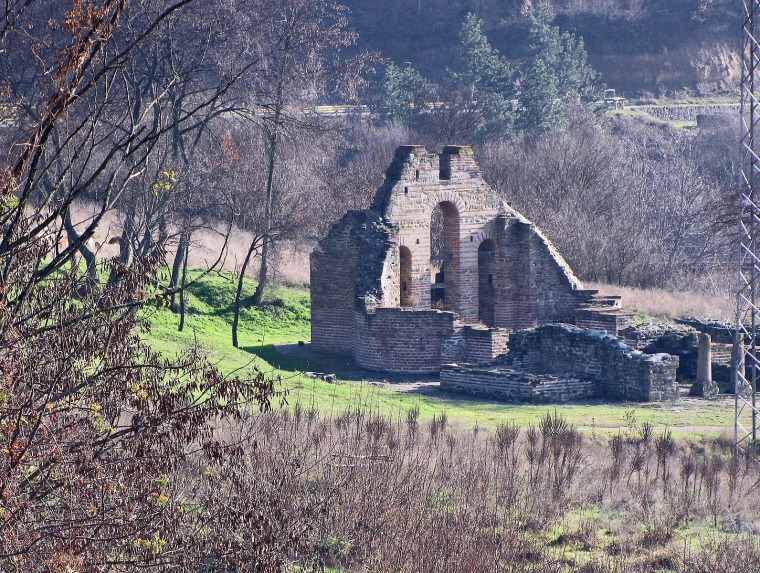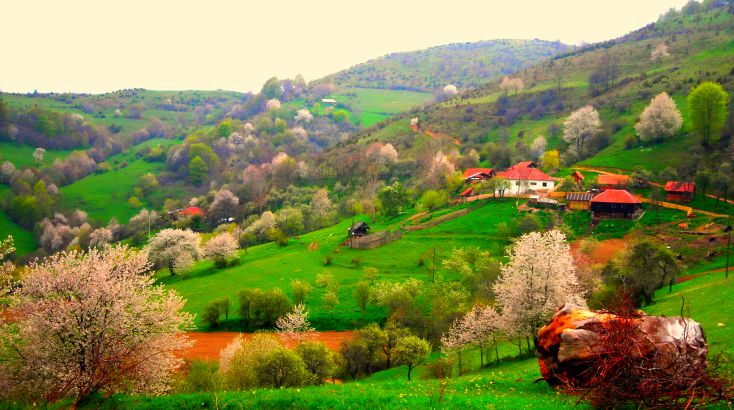

Lush pastures, hidden springs of pure mountain water and versatile plant and animal kingdoms, characterize this mountain with a harsh climate and vast ranges. The view from its peaks offers amazing experience, but untainted nature gives even more surprises at every turn.
Golija proudly rises among the peaks of The Old Vlach Mountains of southwestern Serbia. This untamable beauty covered with oak, beech, spruce and fir forests, is unique because of its incredible nature about which many myths and legends are still being retold. However, her beauty does not lie only in the natural abundance, but also in the rich cultural heritage that surrounds it.
Golija was most likely named because of its size – huge (golema – huge). It is located southwest of Ivanjica and north of Novi Pazar, and belongs to the inner area of the Dinara mountain system. Golija has a shape of a horseshoe, and it stretches over a length of 32 km between the rivers Ibar and Moravica, the Pešter plateau and mountain Radočel.
This mountain is the guardian of the centuries of tradition, history and culture. Numerous monuments and monasteries which date from the Middle Ages are scattered on its slopes, and the Roman Bridge, which is believed to originate from the period of the Nemanjic dynasty, is located at the foot of this mountain. Monasteries Gradac, Kovilje, Pridvorica, Sopocani, Studenica and Đurđevi stupovi (St.George Pillars) are just some of the shrines that make this area a famous part of the cultural heritage of Serbia.
 However, it is difficult to pick out just one feature of the Nature Park and Biosphere Reserve. In addition to the lush forests whose trees often reach up to 40 meters, Golija is also known for its numerous springs of uncontaminated and healthy water.
However, it is difficult to pick out just one feature of the Nature Park and Biosphere Reserve. In addition to the lush forests whose trees often reach up to 40 meters, Golija is also known for its numerous springs of uncontaminated and healthy water.
The most famous are Moravica and Studenica, which are also considered to be the symbols of this mountain; and we should not forget the three lakes surrounded by dreamlike nature – Tičar, Nebeska suza (Tear of Haven) and Kosanin Lake.
Meadows full of different plant species spread across the slopes of Golija and cover the mountain like densely woven bedspreads. Over 117 species of algae, 40 species of moss, 7 species of lichen and 75 species of mushrooms have found their home in the verdure of Golija.
Mountain maple trees which survived the ice age are of special importance, and right here they formed the most beautiful and best preserved deciduous forest. You can also find over 100 species of herbs on this mountain.
The Government of the Republic of Serbia, implemented a decree in 2001 which puts this area under state protection as “Golija Nature Park” ranking it in the first category of protection as a natural resource of exceptional importance. In the same year the biosphere reserve named Golija -Studenica was defined and immediately gained internationally recognized status in the context of the UNESCO MAB program.
In addition to rich flora, Golija boasts a wide variety of wildlife. Wolves, foxes, wild pigs, bears, deer and rabbits are the residents of its dense forests and due to the presence of 95 bird species Golija is considered a very important mountain ornithological center.
 Many protected species such as weasels, squirrels, swamp shrews and wolves are also interesting.
Many protected species such as weasels, squirrels, swamp shrews and wolves are also interesting.
The view from the highest peaks Jankov kamen and Crni vrh (Janko’s Stone and Black Peak) ranges almost across the half of Serbia.
It is a fascinating experience to conquer steep and untamable slopes of Golija, and enjoy the view that is very rarely seen. Dense forests, harsh climate and vast expanses make this mountain impassable, so you will rarely meet any hikers here.
Hence, there is a saying here “Ne zna Golija šta je delija”, (“Golija doesn’t know what bravery is”) meaning that mountain has no respect for the brave and will not let them pass easily.
How to reach mountain Golija?
Golija is 230 km away from Belgrade, 40 km away from Ivanjica and 32 km from Novi Pazar.
You can get to this nature park and biosphere reserve following Ibarska magistrala highway, to town Pozega where it forks to town Ivanjica. There are many signposts to Golija which are impossible to miss. The road leads to the place Golijska reka, which is the starting point for the ascent to the highest peak Jankov kamen.
Being here, don’t forget to…
… Visit monasteries Sopocani, Studenica and Đurđevi stupovi. In addition to their timeless beauty, these holy temples are the guardians of some of the most beautiful and oldest Serbian fresco paintings.
… Take a stroll through Serbian “mini-Istanbul”, which is the popular name for the town Novi Pazar. Its unusual blend of east and west, turbulent history and many small craft shops will certainly “tickle” your imagination.
… Enjoy the unpolluted air of the air spa Ivanjica. There are many natural and cultural attractions nearby this town, but the visit to the Hadži Prodan cave is simply a must.









